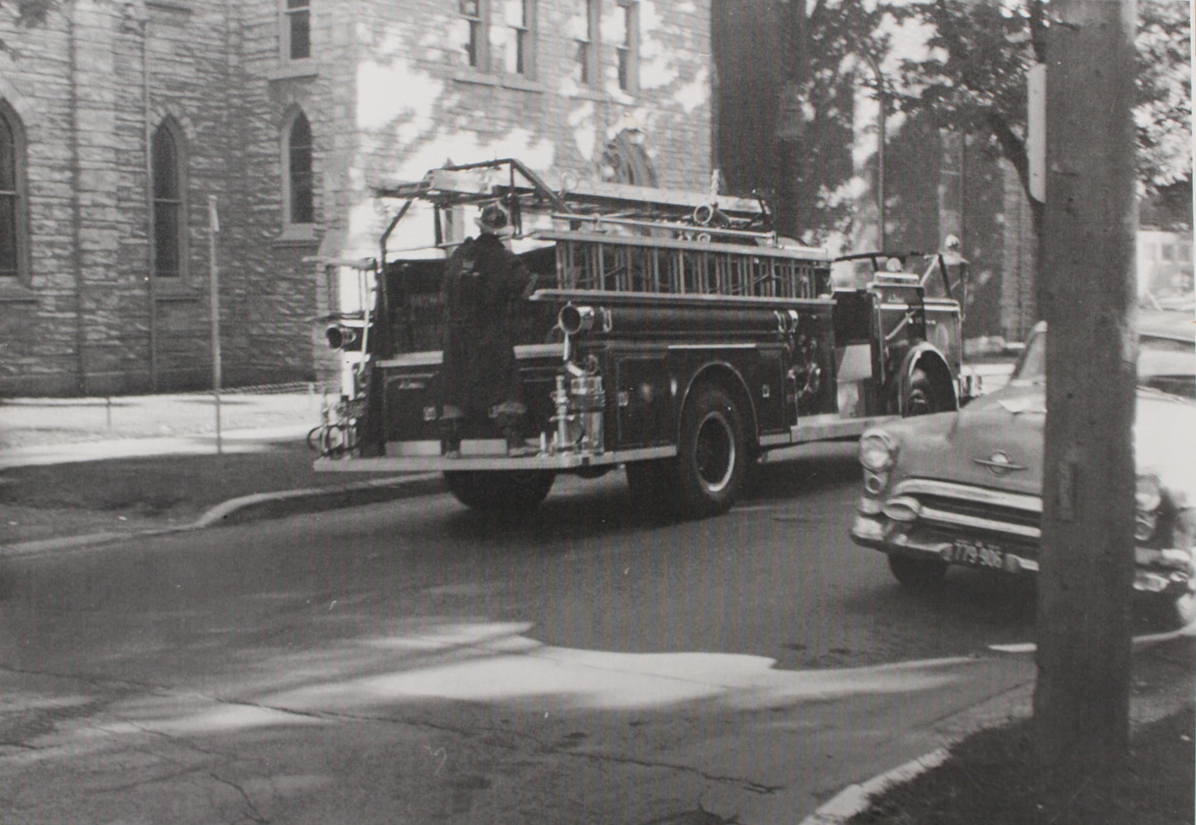The final flame is out
The final flame is out
London’s oldest fire station is now an empty boarded-up building at 160 Bruce St.
Replaced last June by a new firehall at the corner of Commissioners and Wonderland roads, the old No. 3 Fire Station now stands silent and unused.
Constructed in 1880 when that area was part of Westminster Township, it was built to house the police department in the upper portion and the fire department in the lower section.

Station 3 – Bruce St.
The pumper at No. 3 Fire Station drove out of the old building for the last time in June, to take up position in the new firehall at Commissioners and Wonderland roads. It will be joined by a new squirt-model firetruck later this year. Photo by Ernie Lee of The London Free Press

Capt. Bob McIntyre looks over an old file from city hall, stored in what was once the hayloft. Even old ballot boxes rest where the long-vanished fire-horses’ fodder was stacked. Photo by Ernie Lee of The London Free Press.

A balconied observation deck once topped this hose tower. Photo by Ernie Lee of The London Free Press

The hose tower was a giant drying rack where the fire hoses were hung to dry after being used to fight a blaze. Photo by Ernie Lee of The London Free Press
The two horses were stabled in the rear.
With annexation, in the later years of the 19th century, it became No. 3 Fire Station. John A. Roe was London’s fire chief at the time. He was killed fighting a fire at the Sterling Shoe factory in 1904.
For many years the hose tower on the east side of the building was the highest structure in the district. The glassed-in top contained a balcony, but this part was later removed.
A number of fires in oil refineries east of Adelaide Street kept this station on the run. Today the refineries are gone. The city refused to contribute $20,000 to build a pipeline to carry the oil from the Petrolia drilling fields to London, with the result that the refineries were moved to Petrolia.
In 1898 it took five minutes for the horse-drawn rig to reach the scene of a disaster at the city hall – then on Richmond street, just north of Dundas – in which several people were killed. They were attending a political meeting when the floor caved in, dropping many to the basement.
The horses that pulled the fire reels in those days required special attention that today’s trucks don’t need; On days when there were no alarms, the horses were hitched up and taken on a run at 8 p.m. for exercise and training. If there were no runs during the night, they were taken for another run at 8 a.m.
Besides the hose-wagon, a fully equipped sleigh was available for when snow covered the ground.
Retired deputy Chief Sid Ponsfore, who spent many years at No. 3 station, recalls the time when the sleigh was used for six weeks continuously because of deep snow. The horses were retired with the advent of trucks in 1920.
Now wanted by various groups in the city, the building is a monument to the brave firefighters of days of yore.
Story and photos by Ernie Lee of The London Free Press

This brass pole, worn mirror-smooth by years of use, ended up at the still older firehall in Pioneer Village. Photo by Ernie Lee of The London Free Press
Read more about Station 3:
Epitaph of a Firehall
London’s oldest fire station is now an empty boarded-up building at 160 Bruce St.



 …
…



 …
…



